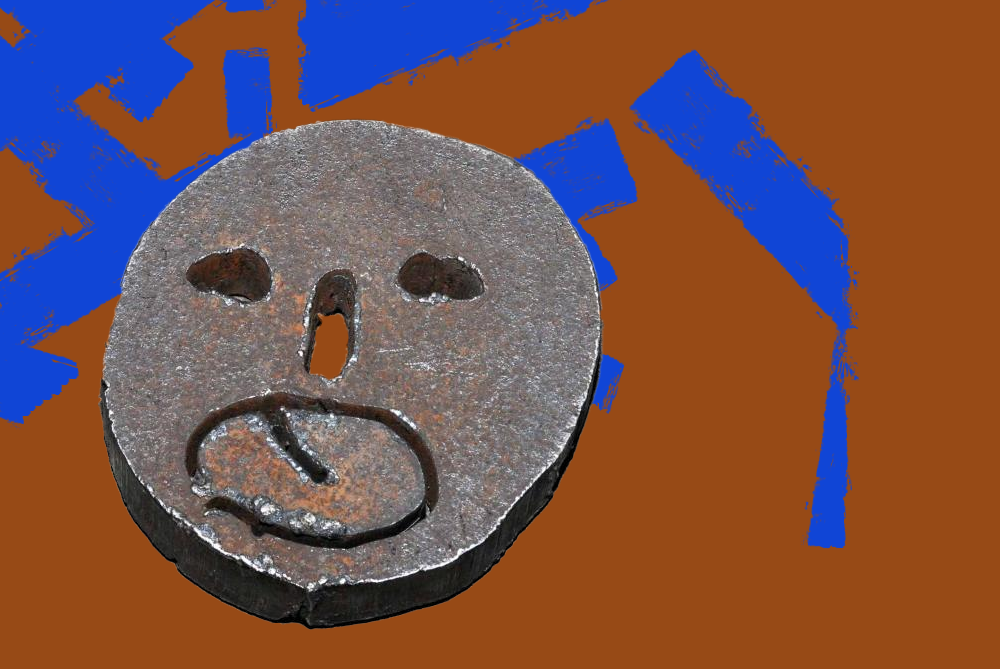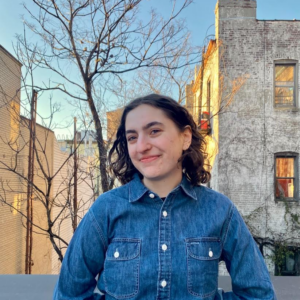In his autobiography, Berlin Childhood Around 1900, Walter Benjamin describes an Imperial Panorama, or Kaiserpanorama, a revolving cylinder with a stereoscopic projection of images popular across Europe in the late 1800s and early 1900s. With this device, “it did not matter where you began the cycle. Because the viewing screen, with places to sit before it, was circular, each picture would pass through all the stations; from these you looked, each time, through a double window into the faintly tinted depths of the image” (42).
The invention of the Kaiserpanorama allowed for viewers to interact with picturesque images from faraway lands and cultural tableaux, as well as visualizations of the news and current events. For Benjamin, a childhood encounter with the Kaiserpanorama was a window to his cultural heritage. He writes, “one afternoon, while seated before a transparency of the little town of Aix, I tried to persuade myself that, once upon a time, I must have played on the patch of pavement that is guarded by the old plane trees of the Cours Mirabeau” (44) Here, the Kaiserpanorama acts as the mediator through which Benjamin experiences affect, or emotional response, to a presentation of cultural heritage.
Because of the captivating nature of this presentation of history, one could easily slip into a misunderstanding of what is truly their cultural heritage, convincing the viewer that places they have never been to belong to them in some way. In the case of Benjamin, perhaps he did not really experience visiting this location as the images persuaded him to believe, yet they still led him to have a personal and visceral experience of recollection.
Wikimedia commons—By unknown, – Prospekt Augusta Fuhrmanna
This technology invites an illusionist flattening of the viewers’ understanding of time. The absence of a finite beginning or end to the series of stereoscopic images allows the viewer to fall into “a double gaze simultaneously aware of the present and the future, or, to transpose tenses, of past and present” (Skoggard, 170).
When I was twelve years old, I took a trip with my b’nai mitzvah class to the United States Holocaust Memorial Museum. Like many American Jewish children, I had already been exhaustingly educated on Holocaust history. I had a heavy sense of generational, cultural responsibility while also having become desensitized to many of the images I saw and stories I heard. Once at the museum, I watched videos projected of Jews being forced into boxcars and sent to concentration camps, and saw piles of shoes taken from victims before being forced into gas chambers. Most memorable to my twelve year old self, though, were material replicas of the rotting turnips rationed to Jews living in the ghettos. This bleak prospect of malnourishment, one that I learned so thoroughly about and had encountered in books and virtual Holocaust museum exhibits, evoked in me a new, overwhelming sense of affect. To this day, I still cannot eat turnips because of the unsettled feeling I was left with after being in the presence of physical historical ephemera.
A caveat to my visit to the Holocaust Memorial is that I have no tangible connection to the horrors of the Holocaust. No relatives of mine perished nor even had to flee. All of my ancestors that I know of had left Europe by the end of the first World War.
I am not unique in having experiences of this kind. In fact Holocaust museums and methods of memory transmission are often intentional in fabricating this form of historical encounters. Alison Landsberg writes precisely of this phenomenon in her analysis of the United States Holocaust Memorial Museum. The Holocaust Memorial is an experiential museum with architecture that places visitors “at the mercy of the museum.” In addition to this “The architecture and exhibition design conspire to force visitors to confront images and objects that in other museums they might ignore” (129). Landsberg suggests that this museum reflects a “larger trend in American mass culture toward the experiential as a mode of knowledge” and the “desire to live history” (130). In more traditional forms of knowledge transmission, texts, images, and documents examined and analyzed are relied on to produce cognition. In this case, the cognitive is decentered in favor of the experiential as a way to manufacture affect. This is precisely what I experienced; I left the Holocaust Memorial with feelings rather than facts. It is not that I remember the dates or historical specifics of the exhibits that I saw, instead I remember the feeling of seeing replicas of rotting vegetables. In producing visitor responses such as my own, experiential museums alter what is considered knowledge, “That is, that the mass media make available the conditions under which people might be able to attach themselves to pasts they did not live or identities by which they are not ‘biologically’ defined” (130).
When you enter the Holocaust Memorial, you are handed an identification card with the name of a Holocaust victim and a few sentences detailing their story. The intention behind doing this is an attempt to move the notion of Holocaust victims away from mere statistics towards personal tragedy. Non-Jewish Holocaust victims are included in those represented by the identification cards, an attempt to include non-Jewish victims of the Holocaust where they are often unacknowledged and “speak across ethnic lines to a non-Jewish population” (132). But the intention is to get non-Jews to empathize with the Jewish victims of the Holocaust, not the other way around. This reinforces a hegemonic presentation of the Holocaust (and genocide at large) as a uniquely Jewish experience. The political power of mediated information must be noted here as well. By taking an authoritative stance on the experience of genocide, the Holocaust Memorial makes clear that what is included in and excluded from the museum is extremely intentional.
Vital to the production of affect within the Holocaust Memorial is the utilization of physical objects as educational and experiential tools. On the floor exhibit titled ‘The Final Solution,’ there are not traditional museum features of galleries or display cases, instead the walls are illuminated by “video monitors showing newsreels from the ghettos…and objects from these places—tools from the ghetto workshops, stained-glass windows from the Cracow synagogue, the Lodz hospital door” (132). Landsberg suggests that even though visitors are not allowed to touch these objects, their presence alone allows “their seductive tangibility, [that] draws you into a lived relationship with them” (132). This “illusion of unmediated proximity” contributes to a dissipation of understanding what is actually yours. When in the same room as objects that were conceivably present during moments of historical tragedy, like the door of the Lodz hospital, the emotion produced by their sight can be strong enough to persuade the viewer not only to acknowledge that they are historically significant, but personally significant as well.
Landsberg explains that the key to the Holocaust Memorial’s evocative impact is the “odd sense of spatial intimacy with those people who are at an unbridgeable distance, who are conspicuously absent” (132). There is a sense that while you, the visitor, are in palpable proximity to an object, the historical subject that would have encountered it is not present.
Landsberg goes on to explain that mimesis, which is often at the root of knowledge production, plays a significant role at the Holocaust Memorial. Much of the visitors’ experience of the Holocaust Memorial is influenced by their closeness to heritage objects. Not only does the object’s presence produce affect, it also makes apparent the “sensuous trace of an absence” of the historical figure the object would have encountered. This causes what Landsberg would describe as a “prosthetic relationship” that is “predicated on the object’s indexicality—on its ‘realness’ and materiality—but is also predicated on each visitor’s sense of who he or she is” (135). The visitors’ identity combined with the perceived realness of objects permits a taking on of memory, prosthetically.
In a final example, Landsberg offers an anecdote of an experience she had at the Holocaust Memorial:
As I came through the boxcar I saw a guard, visibly distraught, speaking into his walkie-talkie. I slowed enough to hear him reporting that there was smoke emanating from a vent above us. I looked up and sure enough, smoke was wafting into the room. My immediate response was not—as it would have been in almost any other public building—that there was a fire. Instead I wondered whether we were being gassed. This experience shows rather dramatically how the museum’s transgression of the traditional exhibiting strategies—its blurring of the boundary between the spectator and the exhibit—might actually make vulnerable the bodies of its spectators. (137)
The effectiveness of the Museum’s modes of engagement can not be understated here. The reaction is authentic and ultimately terrifying. But is it ethical? While progressive, even transgressive, modes of transmitting information can be wildly effective, they can also instill a sense of fear and discomfort in the viewer that goes beyond knowledge production and becomes harmful.
My encounter with the physical evidence of cultural memory at the Holocaust Memorial had a similar effect to Landsberg and Benjamin’s material encounters. The physical object acted as proof of something I had only heard about, never really seen. The strong affect led me to take on a heritage that was not entirely my own, similar to how Benjamin saw such beautiful images in the Kaiserpanorama that he began to think he really had been to the Cours Mirabeau (44).
Identification is not an entirely poor goal to have in historical memory transmission. But it must be wielded carefully. The Holocaust Memorial utilizes technologies so convincing that visitors are compelled to identify with Holocaust history, whether or not they have an actual heritage connection, for the sake of memory construction. This reflects a general sentiment in Holocaust education to pass down the memory of the Holocaust to the next generation of Jewish children, putting the responsibility of stopping an antisemetic genocide from happening again into the hands of these Jewish children, not making it the responsibility of Neo-Nazis.
In the current moment of facism, in which the opposition to Israel’s genocide of the Palestinians is being distorted as antisemitism, Jewish institutions that claim authority on the memory of genocide must change their ways. Instilling fear of a recurring Holocaust in Jewish children through experiential deceptive museum technologies will not stop true instances of antisemitism. If Holocaust education continues to focus its impact on evoking feelings through fabricated historical experiences rather than comprehension, gaps in understanding will lead to genuine antisemitism. The realm of Holocaust education is in need of a restructuring. One that acknowledges the weight of the Holocaust, while recognizing that genocide is not a uniquely Jewish experience. Holocaust education cannot succumb to the myth of unmediated memory, the myth that what one can see is an entire truth.


